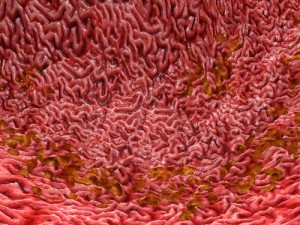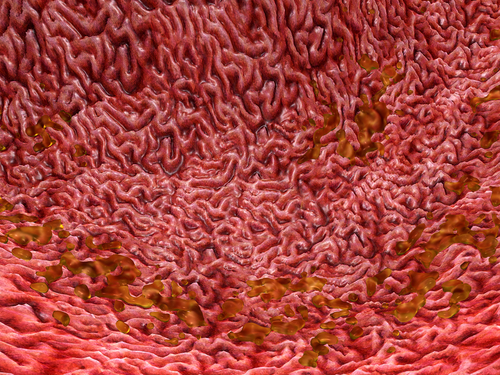 A new study entitled “TGR5 reduces macrophage migration through mTOR-induced C/EBPβ differential translation” reports that bile acids, a component that can be found in the bile of mammals and other vertebrates by activating a receptor – TGR5 – may be a potential therapeutic drug against diabetes. The study was published in the November issue of Journal of Clinical Investigation.
A new study entitled “TGR5 reduces macrophage migration through mTOR-induced C/EBPβ differential translation” reports that bile acids, a component that can be found in the bile of mammals and other vertebrates by activating a receptor – TGR5 – may be a potential therapeutic drug against diabetes. The study was published in the November issue of Journal of Clinical Investigation.
Obesity and type two diabetes are major epidemics worldwide. In the United States alone, 1.7 million new cases were diagnosed in 2012. In obese individuals, an exacerbated inflammatory status is often associated with fat tissue. As a consequence, fat cells are usually less responsive to insulin, leading to insulin resistance (a characteristic symptom of risk to develop diabetes, specifically type two diabetes).
The condition known as “insulin resistance” is a consequence of the accumulation of cells of the immune system, mainly those that are known as adipose tissue macrophages. These macrophages secrete signals, known as pro inflammatory cytokines, that were previously shown to induce insulin resistance. Since these signals also function as recruiters, even more macrophages are recruited to the fat tissue.
In this study, the team of scientists led by Kristina Schoonjans at the EPFL’s Institute of Bioengineering, the University of Amsterdam and colleagues from the University of Perugia, Italy discovered a receptor at the surface of macrophages — the bile acid–responsive G protein–coupled receptor (TGR5) — which is activated by bile acids and is capable of inhibiting type 2 diabetes associated inflammation. Specifically, the scientists studied obese mice who lacked the macrophage Tgr5 receptor. These mice exhibited higher levels of inflammation, increased chemokine expression, and higher macrophage numbers when compared to their controls. Notably, they had enhanced insulin resistance. Further studies demonstrated that activating TGR5 with compounds similar to the natural bile acids, the receptor could block the secretion of the pro-inflammatory cytokines, and therefore prevent further accumulation of these cells into the fat tissue.
Alessia Perino, study first author commented, “Of course, we don’t want to use bile acids for treatment of diabetes. We are very interested in finding molecules that can mimic the effects of bile acids, and we have already discovered several small molecules that can do that.”


